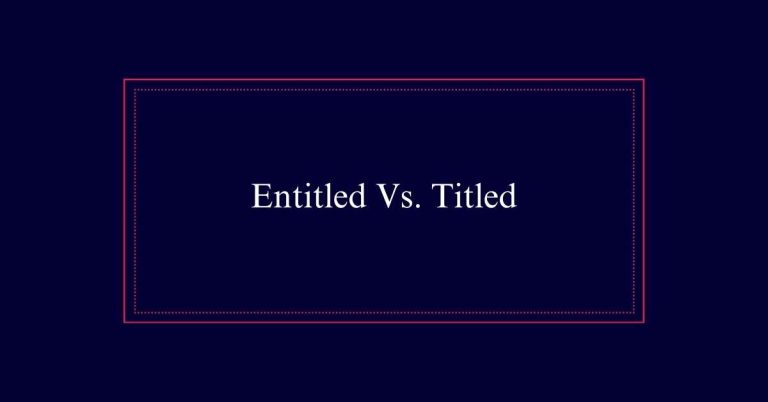Parentheses Vs. Brackets
Parentheses ( ) are used to include additional information, clarify acronyms, or provide supplementary details in a sentence. For example, “He finally answered (after five minutes of thinking) that he would agree.” Brackets [ ] are used within quoted material to add explanation or context, such as “She stated, ‘The results [of the survey] were inconclusive.'”.
Parentheses are essential for in-text citations and defining terms, while brackets help clarify within direct quotes.
Definitions of Parentheses
Parentheses are essential marks used to set aside tangential or unnecessary information in a sentence. They help clarify, add context, or provide supplementary details without disrupting the main flow of text. Common uses include offering complementary explanations or making personal comments.
Parentheses also define acronyms within a sentence, enhancing readability. In academic writing, they are vital for in-text citations in formats like APA, Chicago, and MLA. Additionally, parentheses indicate that a word can be either singular or plural, aiding in grammatical precision.
Examples of Parentheses Usage
To illustrate their versatility, let’s explore some practical examples of how parentheses are used in various contexts.
Parentheses often set aside tangential information, such as in: ‘The meeting (which lasted three hours) was very productive.’
They also provide complementary explanations: ‘She finally finished her thesis (a 200-page document) last night.’
For defining acronyms, they are essential: ‘The organization is known as the World Health Organization (WHO).’
In academic writing, parentheses are used for in-text citations: ‘Jones (2020) argues that…’
Additionally, parentheses clarify optional words: ‘Please bring your textbook(s) to class.’
Singular Vs. Plural Forms
Understanding the distinction between the singular and plural forms of this punctuation is essential for accurate writing. The term ‘parenthesis’ refers to a single curved line: ‘(‘.

In contrast, ‘parentheses’ denotes both curved lines used together: ‘()’. Recognizing when to use each form is vital for maintaining clarity and precision in your text.
- Singular (parenthesis): Use this term when referring to one side of the pair.
- Plural (parentheses): Use this term when referring to both sides together.
- Application: Parentheses are used to enclose additional or tangential information.
- Consistency: Make sure the form aligns with the context to avoid confusion.
Punctuation With Parentheses
When using parentheses, specific punctuation rules must be followed to guarantee clarity and correctness.
If the parenthetical information forms a complete sentence, place the period inside the closing parenthesis. For example: (This is a complete sentence.)
When the information within parentheses is part of a larger sentence, place the period outside. Commas should follow the closing parenthesis, not precede it. For instance: She went to the store (which was nearby), and bought groceries.
Additionally, the core sentence should remain grammatically correct if the parenthetical content is removed. Subject-verb agreement must ignore the text in parentheses.
Parentheses in Citations
Parentheses play an important role in formatting in-text citations across various citation styles like APA, Chicago, and MLA. They are essential for providing necessary details without disrupting the flow of the text. In-text citations within parentheses usually include the author’s name, publication year, and page number, depending on the citation style.
Consider the following uses:
- APA Style: (Smith, 2020, p. 15)
- Chicago Style: (Smith 2020, 15)
- MLA Style: (Smith 15)
- Multiple Citations: (Smith 2020; Jones 2018)
These concise references guide readers to the full citation in the bibliography or works cited section, ensuring proper credit and facilitating further research.
Understanding Brackets
Brackets, characterized by their squared corners, are primarily used to add editorial comments or clarify quotations within a text. They provide additional information that was not originally part of the quoted material. This can include explanations, corrections, or clarifications made by the author or editor.
Brackets also serve as a tool for indicating changes or additions to the original text, ensuring that the reader understands these modifications. Moreover, they can be used for nested parentheses in complex bibliographic citations. This helps maintain clarity and avoids confusion.
Brackets in Quotations
Editorial comments within quotations often require brackets to clarify or add essential information. Brackets serve to guarantee that the reader understands the context or meaning of the quoted material. They can indicate alterations or additions made by someone other than the original author.
- Clarification: Brackets can explain unclear references or pronouns within a quote.
- Context: They provide necessary background that the original text might lack.
- Correction: Used to fix grammatical errors in the quoted text.
- Addition: Brackets can add missing words to complete a sentence or thought.
Nested Parentheses
When dealing with complex information, nested parentheses can help organize and clarify the text. Nested parentheses involve placing one set of parentheses inside another. This technique is useful when multiple layers of information need to be included without confusing the reader.
For example, consider this sentence: ‘The conference (held annually (since 2005)) was well-attended.’ Here, the inner parentheses add detail to the main statement. To avoid confusion, use nested parentheses sparingly and make sure that each set is clearly distinguishable.
Properly used, nested parentheses enhance readability by structuring elaborate details in a manageable way. Always make certain that the sentence remains understandable even if the nested information is removed.
Brackets Vs. Parentheses
Understanding the distinct functions of parentheses and brackets is essential for clear and effective writing. Parentheses and brackets serve different purposes and knowing when to use each can enhance clarity.
- Parentheses: Used to insert additional information or asides that are not essential to the main text. Example: ‘The committee (which met last Thursday) made a decision.’
- Brackets: Employed mainly within quotations to add clarifications or editorial comments. Example: ‘He [the CEO] decided to resign.’
- Nested Parentheses: When necessary, brackets can be used to set apart information within parentheses. Example: ‘The results (see Table 2 [page 5]) were conclusive.’
- Bibliographic Citations: Brackets can replace parentheses in specific citation styles. Example: ‘Smith [1998] argues…’
Informal Writing Uses
In informal writing, parentheses are often used to add personal comments or supplementary information. They allow writers to insert side notes or clarify points without disrupting the main text.
For example, one might write, ‘I love pizza (especially with extra cheese).’ This parenthetical note adds a personal touch and additional detail. Parentheses can also enclose minor digressions or humorous asides, making the text more engaging.
In contrast, brackets are seldom used informally. They are primarily for technical or academic purposes, such as adding context to quotations.
Parentheses offer a flexible way to enhance informal writing, providing clarity and a conversational tone. This useful tool helps make writing more relatable and understandable for readers.







